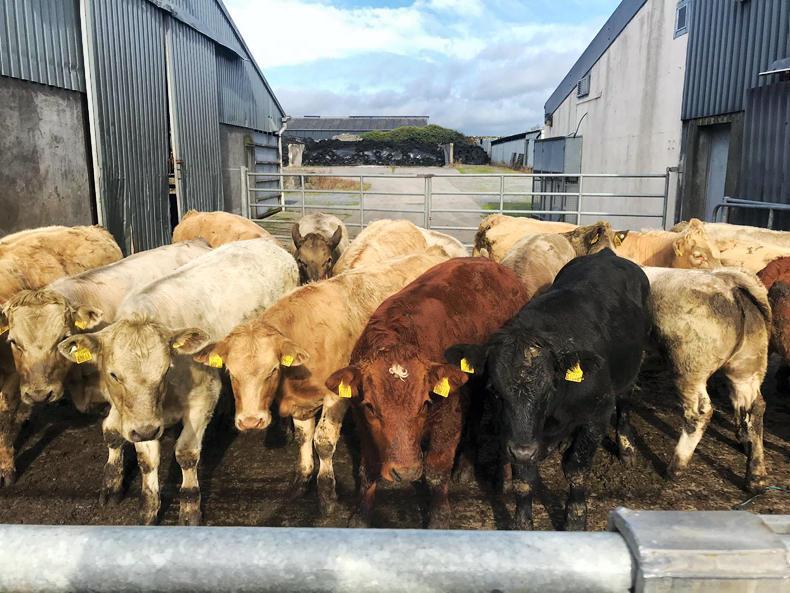The Department of Agriculture, Food and the Marine sent letters last week to farmers notifying them that they exceeded nitrates limits in 2018.
There was an error in some letters sent, with the information contained not related to the herd owner.
The Department has moved to reassure farmers that a corrected letter will now be circulated to those affected.
A statement to the Irish Farmers Journal read as follows:
“The nitrates section recently wrote to a number of farmers (dated 8 Oct) advising them of a breach of the nitrates regulations in 2018.
“Unfortunately, due to a data mismatch, 827 letters were issued which contained incorrect details and information to the named recipient.
“The Department moved immediately to address this issue and sent a further letter identifying the error and apologising in full to all farmers involved.
“A corrected letter will issue to these farmers in due course.”
A Department spokesperson also advised that the matter was reported to the Data Protection Commissioner as per the appropriate procedures for a data breach.
2019 levels
The letters regarding 2018 nitrates levels should focus the minds of farmers on their production levels for 2019.
The permitted level of organic nitrogen is 170kg per hectare, while farmers who successfully applied for a derogation must not exceed an upper limit of 250kg organic nitrogen per hectare.
Farmers can keep track of nitrogen and phosphorus levels produced by bovines by checking N and P statements on their www.agfood.ie account.
The latest statements available are for the end of July, but updated statements are due to be issued.
In addition to the statements available online, informational text messages are issued periodically to farmers registered to receive them from the Department.
Farmers not already registered to receive text alerts can do so by clicking the link on the ‘Contact Us’ section on the home page of the Department’s website at www.agriculture.gov.ie.
Calculating volumes
Farmers should note that the nitrogen and phosphorus statements are based on bovine numbers and, as such, do not take into account other animals, such as sheep, pigs, poultry, horses, etc.
Farmers need to account for these themselves and Table 1 details organic nitrogen levels for the most common grazing and non-grazing livestock.
The main route of reducing nitrogen levels at this stage of the year are as follows:
Reducing livestock numbers.Exporting enough slurry or farmyard manure.Availing of temporary grazing agreements.There are records which the farmer needs to submit to the Department for these activities to be taken into account.
A Record 3 form must be submitted to notify of the movement of slurry and farmyard manure, while a Record 4 form must be submitted to record temporary grazing agreements.
Both of these forms must be submitted by 31 December 2019.
The Department of Agriculture, Food and the Marine sent letters last week to farmers notifying them that they exceeded nitrates limits in 2018.
There was an error in some letters sent, with the information contained not related to the herd owner.
The Department has moved to reassure farmers that a corrected letter will now be circulated to those affected.
A statement to the Irish Farmers Journal read as follows:
“The nitrates section recently wrote to a number of farmers (dated 8 Oct) advising them of a breach of the nitrates regulations in 2018.
“Unfortunately, due to a data mismatch, 827 letters were issued which contained incorrect details and information to the named recipient.
“The Department moved immediately to address this issue and sent a further letter identifying the error and apologising in full to all farmers involved.
“A corrected letter will issue to these farmers in due course.”
A Department spokesperson also advised that the matter was reported to the Data Protection Commissioner as per the appropriate procedures for a data breach.
2019 levels
The letters regarding 2018 nitrates levels should focus the minds of farmers on their production levels for 2019.
The permitted level of organic nitrogen is 170kg per hectare, while farmers who successfully applied for a derogation must not exceed an upper limit of 250kg organic nitrogen per hectare.
Farmers can keep track of nitrogen and phosphorus levels produced by bovines by checking N and P statements on their www.agfood.ie account.
The latest statements available are for the end of July, but updated statements are due to be issued.
In addition to the statements available online, informational text messages are issued periodically to farmers registered to receive them from the Department.
Farmers not already registered to receive text alerts can do so by clicking the link on the ‘Contact Us’ section on the home page of the Department’s website at www.agriculture.gov.ie.
Calculating volumes
Farmers should note that the nitrogen and phosphorus statements are based on bovine numbers and, as such, do not take into account other animals, such as sheep, pigs, poultry, horses, etc.
Farmers need to account for these themselves and Table 1 details organic nitrogen levels for the most common grazing and non-grazing livestock.
The main route of reducing nitrogen levels at this stage of the year are as follows:
Reducing livestock numbers.Exporting enough slurry or farmyard manure.Availing of temporary grazing agreements.There are records which the farmer needs to submit to the Department for these activities to be taken into account.
A Record 3 form must be submitted to notify of the movement of slurry and farmyard manure, while a Record 4 form must be submitted to record temporary grazing agreements.
Both of these forms must be submitted by 31 December 2019.






 This is a subscriber-only article
This is a subscriber-only article










SHARING OPTIONS: